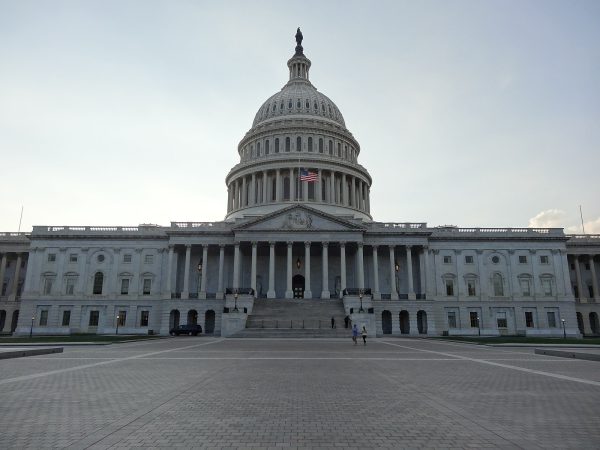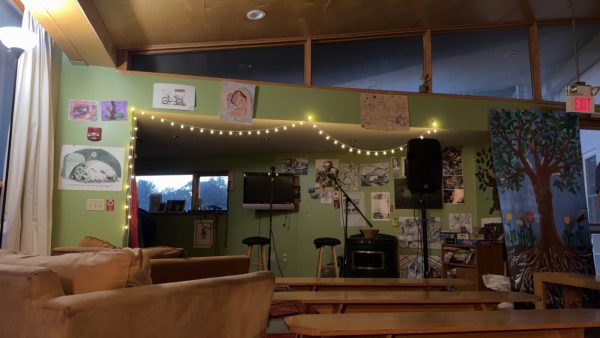Professor of Urban Planning Discusses Increasing Gentrification of Black Neighborhoods
Lance Freeman’s lecture on Tuesday, April 25 addressed the implications and historical context of the increasing “gentrification” of historically black neighborhoods in cities such as New York Washington DC, and Philadelphia.
“The End of the Ghetto? The Ghetto in Historical Context and the Threat of Gentrification” examined the “double edged sword” of gentrification and offered suggestions on how gentrification can be managed in a responsible manner.
Gentrification refers to the influx of the middle class into previously low-income neighborhoods. Professor Hoefler, chair of the policy studies department, explained the connection of policy and gentrification, stating, “gentrification is a phenomenon that involves a lot of policies, both private and public that are really changing the way people live their lives.” He also noted the importance of understanding gentrification for Dickinson students, explaining, “Given the fact that over 80% of Dickinson graduates will live in a medium-large city after they graduate, it’s important that they understand what the issues are and where they stand.”
Freeman began his talk by describing the process of “ghettoization,” which he defined as “the process by which a group is confined to marginalized and stigmatized space.” Freeman articulated the factors contributing to the ghettoization of black neighborhoods, including racial zoning, restrictive covenants, realtor codes, red lining, segregated public housing and terrorism of blacks in white neighborhoods as factors contributing to this ghettoization. Legacies left behind in these neighborhoods include lower rates of wealth accumulation, segregation in public schools, less access to suburban employment opportunities, less access to amenities and high rates of poverty.
As Freeman explained, many people see gentrification as a positive force that can help heal some of the unfortunate legacies of ghettoization by increasing property values, grating greater retail access, and promoting racial and socioeconomic integration. Moreover, Freeman cited his own studies, and those of other scholars, showing that indigenous residents are not displaced; residents in gentrifying neighborhoods move at similar rates to residents elsewhere.
He also presented a counter view of the ghetto as an oppressive force, citing evidence that the ghetto is actually a “haven” for black communities symbolizing a voluntary move and source of self-pride. Freeman pointed out that these neighborhoods fostered black political power and “provided a physical space” for civil rights movements.
Freeman noted that many members of these communities feel “pushed out” despite the fact that they are not physically displaced from their homes. He referred to a “clash of values” arising in gentrified neighborhoods, and cited the example of a black church in Oakland receiving a large fine following a noise complaint from new residents.
Yet, Freeman contended, “I don’t see how racial inequalities can disappear” without increased integration, such as through gentrification. Freeman contended that gentrification is inevitable, and therefore must be managed responsibly by maintaining diversity in gentrifying neighborhoods and addressing fears being pushed out by targeting affordable housing to gentrifying neighborhoods and mobilize residents to enable exclusion.
Freeman reinforced Hoefler’s claim regarding the relevance of gentrification for Dickinson students, who he described are likely to become “gentrifiers,” and suggested that students entering gentrified neighborhoods “come into the community and be an asset” rather than an “interloper trying to take over the community.”
Clarke Forum Student Project Manager, Meghan Bell ’19 echoed Freeman’s statement. “I think that gentrification is a social phenomenon that everyone should learn about! A lot of Dickinson students will move to urban areas after graduation and it’s a concept that people should be conscious of, especially because of its racial and social implications.” – Megan Bell
Lance Freeman is associate professor of urban planning at Columbia University and author of There Goes the Hood: Views of Gentrification from the Ground Up.
About one hundred students, faculty members and community members attended the event on Tuesday, April 25 in the Stern Great Room. The talk was sponsored by the Clarke Forum for Contemporary Issues and co-sponsored by the Black Student Union, departments of political science, economics and sociology, as well as the program in policy studies. The program was initiated by student project managers.




